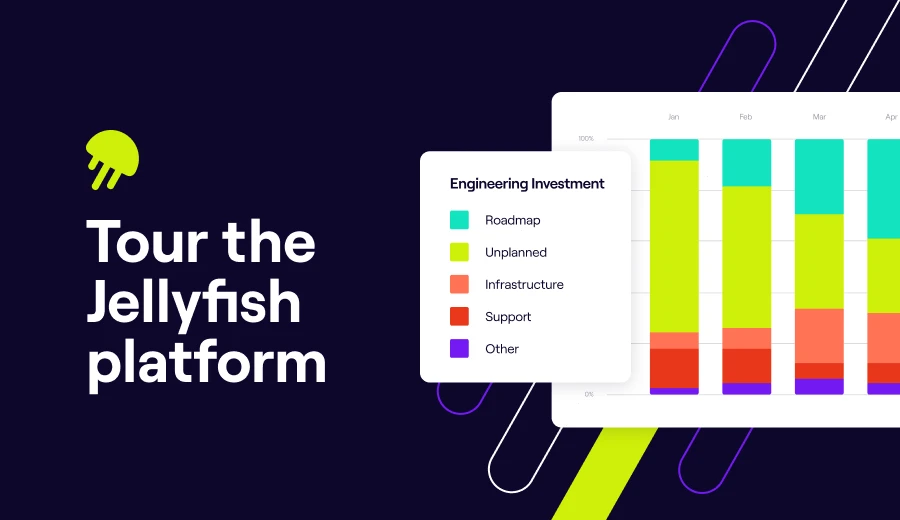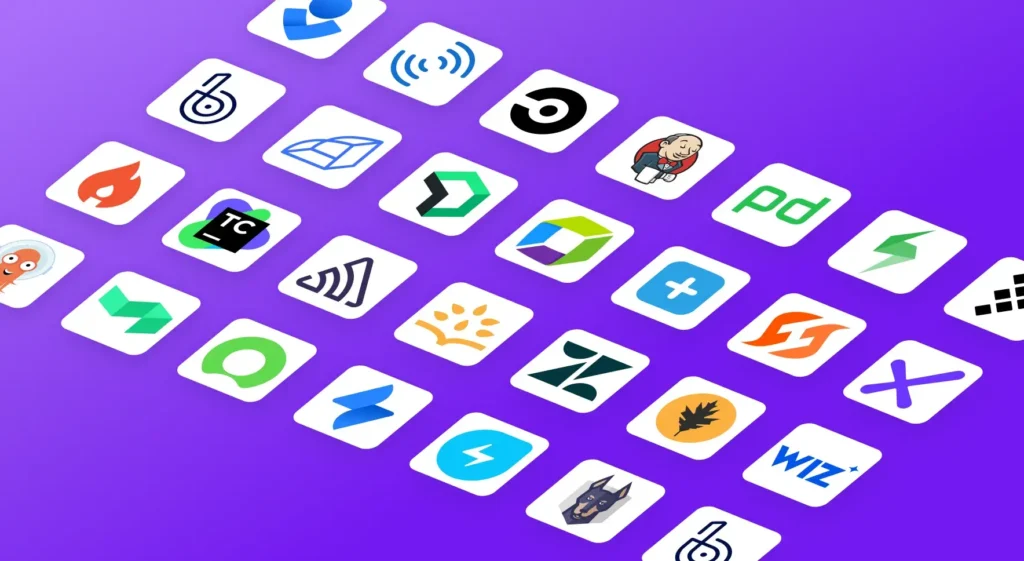In this article
Software Delivery Management (SDM) involves coordinating and supervising activities related to the timely and efficient delivery of software products to end users. At the heart of SDM is the role of a software delivery manager, who plays a crucial role in ensuring software delivery success.
What Does a Software Delivery Manager Do?
What Does a Software Delivery Manager Do?
The software delivery manager oversees the entire software delivery process from start to finish. They work closely with various stakeholders, including software developers, quality assurance teams, project managers, and clients, to define and execute a time delivery strategy that aligns with the organization’s goals and objectives.
A software delivery strategy sets the foundation for the entire delivery process. It includes defining the development methodologies, release cycles, deployment strategies, and quality assurance best practices. The manager collaborates with development teams to establish clear and realistic delivery timelines, allocate resources effectively, and identify potential risks and challenges that may arise during the software delivery process.
The software delivery manager facilitates regular communication between team members, stakeholders, and clients — breaking down silos, and ensuring everyone is well-informed about the progress and changes in the software delivery plan. They also oversee the management of dependencies, issue tracking, and continuous integration to maintain a smooth and streamlined software delivery pipeline.
In addition to project management, the software delivery manager is responsible for ensuring the overall quality of the delivered software. They establish quality control processes, conduct regular testing and reviews, and enforce industry best practices to guarantee that the software meets the required standards.
What is Software Delivery Management?
What is Software Delivery Management?
Software delivery management refers to the comprehensive process of overseeing the planning, execution, and delivery of software projects. It ensures that projects are completed on time, within scope, and according to specified requirements. This involves team coordination, resource optimization, progress tracking, mitigating risks, and maintaining quality throughout the entire software development lifecycle.
Why is Software Delivery Management Important?
Effective software delivery management ensures that software products are delivered on time and within budget, leading to cost savings and increased efficiency. It also helps organizations streamline their development processes, optimize resource allocation, and minimize risks.
Furthermore, it directly impacts customer satisfaction. By ensuring software solutions meet customer expectations and are delivered promptly, organizations can enhance customer experience, build trust, and strengthen their market reputation.
How Does Software Delivery Management Work?
SDM involves a continuous cycle of planning, monitoring, communicating, and adapting.
- Planning: Defining the delivery roadmap, setting clear objectives, and allocating resources.
- Monitoring: Tracking progress, identifying potential risks, and ensuring quality throughout the process. This might involve using dashboards to track key metrics or implementing regular risk assessments.
- Communicating: Fostering transparency and alignment among development teams, stakeholders, and clients.
- Adapting: Addressing any issues or changes that may arise during the software delivery lifecycle.
The Software Delivery Management Process
The Software Delivery Management Process
The software delivery management process is crucial for successfully delivering software products to end-users. It involves a series of activities and phases that align with the software development life cycle (SDLC).
At its core, this process is about managing “deliverables” – any tangible result or output produced during software development. This includes new features, bug fixes, documentation, and major project milestones.
Managing deliverables effectively is critical to ensuring that software projects stay on track, deliver value to stakeholders, and ultimately satisfy customer needs.
Here’s how the software delivery management process unfolds:
Initiation Phase
This phase lays the groundwork for the entire project. The software delivery manager collaborates with stakeholders to define the project scope, objectives, and requirements. This includes identifying the key deliverables and establishing clear expectations for what constitutes successful delivery.
Example deliverables: Project charter, requirements document, feasibility study.
Planning Phase
In this phase, a comprehensive software delivery strategy is created. This involves defining the development methodologies, establishing timelines and milestones, allocating resources, and identifying potential risks. The plan should clearly outline how the team will produce and track the project’s deliverables.
Example deliverables: Software delivery plan, project schedule, risk assessment report.
Execution Phase
This is where the actual development and delivery of the software take place. This phase involves activities like coding, testing, packaging, and deployment. Throughout this phase, the team focuses on producing and delivering the defined deliverables according to the plan and quality standards.
Example deliverables: Working software prototypes, user experience and interface designs, API integrations, test reports, and release notes.
Closure Phase
This phase marks the completion of the software delivery process. It involves final testing, documentation, user training, and handover of the software. The software delivery manager ensures that all deliverables are met, any outstanding issues are resolved, and the software is ready for use.
Example deliverables: Final software product, user documentation, training materials, deployment reports.
Software Life Cycle Models
Software Life Cycle Models
There are several software life cycle models, also known as software development methodologies or processes. Each model represents a specific approach to managing the stages of software development:
Waterfall Model
The Waterfall model is a sequential and linear approach to software development. It consists of distinct, cascading phases: requirements gathering, system design, implementation, testing, deployment, and maintenance. Each phase is completed before moving on to the next, and there is minimal overlap between them. This model emphasizes upfront planning and documentation, making it suitable for projects with stable and well-defined requirements.
Iterative Model
The Iterative model focuses on repeated cycles of development. It involves breaking the software development process into smaller iterations, with each iteration consisting of requirements gathering, design, implementation, and testing. After each iteration, a working version of the software is produced, and feedback is gathered to refine and improve subsequent iterations. This model allows for flexibility and accommodates changes throughout the development process.
Spiral Model
The Spiral model combines elements of the Waterfall and Iterative models. It emphasizes risk analysis and mitigation. The development process progresses through a spiral, with each loop representing a phase of the software life cycle, including planning, risk analysis, development, and evaluation. Each loop builds upon the previous one, with increasing levels of detail and functionality. This model is useful for projects with significant risk and evolving requirements.
Agile Model
The Agile model is an iterative and incremental approach that promotes flexibility, collaboration, and adaptive planning. It focuses on delivering functional software in short iterations called sprints. Agile methodologies, such as Scrum and Kanban, emphasize close collaboration between the development team and stakeholders, frequent feedback, and continuous improvement. Agile allows for changing requirements, promotes customer involvement, and embraces evolving solutions through incremental development.
V-Model
The V-Model is a variation of the Waterfall model that emphasizes the relationship between the development and testing phases. It pairs each phase of the development life cycle with a corresponding testing phase. The left side of the “V” represents the development phases (e.g., requirements gathering, design, coding), while the right side represents the corresponding testing phases (e.g., unit testing, integration testing, system testing). This model ensures that testing activities are aligned with the corresponding development phase, promoting thorough testing and quality assurance.
DevOps Model
The DevOps model is a modern approach that combines software development (Dev) and operations (Ops) into a unified and collaborative process. It aims to establish seamless collaboration between development and operations teams to enable continuous integration, continuous delivery, and continuous deployment (CI/CD) of software. DevOps focuses on automation, fast feedback loops, and frequent software releases, emphasizing the integration of development, testing, and deployment processes.
These are some of the main software life cycle models, and each model has its own advantages, disadvantages, and suitable use cases. The choice of a particular model depends on factors such as project requirements, team dynamics, time constraints, and the level of flexibility and adaptability needed.
Software Development Life Cycle
Software Development Life Cycle
The software development life cycle (SDLC) encompasses the planning, development, testing, deployment, and maintenance of software systems. It provides a structured approach to ensure the successful delivery of software products to end-users.
Organizations should implement best practices to ensure a smooth and efficient software development life cycle. These include having a well-defined and documented process, utilizing version control systems to track changes, conducting regular code reviews, and implementing automated testing and continuous integration practices.
Software Delivery Process
Software Delivery Process
The software delivery process starts with identifying and prioritizing customer requirements, which are then translated into actionable tasks. These tasks are typically managed by two key roles: the delivery lead and the product owner.
What are the differences when it comes to the delivery lead vs. product owner?
- The delivery lead is responsible for overseeing the overall software delivery process, ensuring coordination and collaboration among the development teams, stakeholders, and clients.
- On the other hand, the product owner represents the customer’s interests and ensures that the software meets their requirements and expectations.
The software delivery process follows the SDLC, which consists of various phases such as requirements gathering, design, development, testing, deployment, and maintenance. Each phase is crucial for delivering high-quality software solutions.
Modern software delivery best practices emphasize adopting agile methodologies, continuous integration, delivery, and automation.
Agile methods, such as Scrum or Kanban, promote iterative and incremental development, allowing flexibility and adaptability to changing requirements.
Continuous integration and delivery practices facilitate the frequent integration and release of software updates, reducing the time and effort required for deployment.
Automation tools and processes help streamline software delivery, increasing efficiency and minimizing manual errors.
The Role of a Software Delivery Management Platform
The Role of a Software Delivery Management Platform
A software delivery management platform is a comprehensive solution providing the tools, infrastructure, and workflows to support the end-to-end software delivery process. It encompasses various capabilities, including source code management, continuous integration and delivery (CI/CD), deployment automation, testing frameworks, and release management. A software delivery platform aims to streamline and automate the various stages of software delivery, enabling teams to deliver software products more efficiently and reliably.
The critical distinction between delivery management software and engineering management platforms lies in their focus and scope. While a delivery management platform primarily focuses on the technical aspects of software delivery, such as code integration, testing, and deployment, an engineering management platform is broader in its scope. An engineering management platform addresses the more general needs of the engineering organization, encompassing areas like project management, team collaboration, resource allocation, and performance tracking.
How Jellyfish Helps with Delivery Management
How Jellyfish Helps with Delivery Management
Jellyfish, the leading engineering management platform (EMP), includes software delivery capabilities as a part of its Life Cycle Explorer feature.
Life Cycle Explorer identifies bottlenecks in the life cycle of engineering work to help teams adapt workflow processes and more effectively deliver value to customers.
Unlike existing tools that provide only top-level metrics, Life Cycle Explorer dives deeper to expose and investigate the root cause of process breakdowns so teams can mitigate their impact moving forward.
With its powerful features and real-time insights, Jellyfish helps you:
- Gain complete visibility: See all your ongoing work in one place, from individual tasks to major initiatives. Understand team capacity, track progress accurately, and communicate updates with confidence.

- Deliver on time, every time: Identify and resolve blockers early on, preventing them from derailing your projects. Improve predictability and forecast project completion with greater accuracy.

- Optimize your resources: Ensure your software engineering teams are working at their full potential without being overloaded. Plan realistically, allocate resources effectively, and make data-driven decisions about project scope and timelines.

With Jellyfish, you can:
- Improve predictability of product releases.
- Reduce the likelihood of missed deadlines.
- Make informed trade-off decisions.
- Align resources effectively.
- Increase team efficiency and productivity.
- Enhance communication and collaboration.
And ultimately, deliver high-quality software on time and within budget.

Interested in learning more about Jellyfish?
Better manage your software delivery processes with Jellyfish.
Tour the ProductAbout the author

Lauren is Senior Product Marketing Director at Jellyfish where she works closely with the product team to bring software engineering intelligence solutions to market. Prior to Jellyfish, Lauren served as Director of Product Marketing at Pluralsight.




